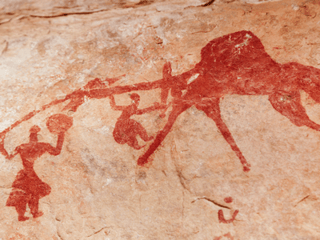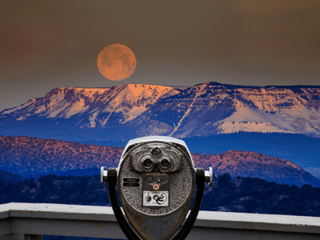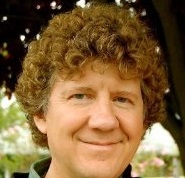A guest post by Dr. Patrick Mahaffey, Associate Chair and Research Coordinator in the Mythological Studies Program at Pacifica Graduate Institute
We live in a world that is awash in diverse and contentious worldviews. How can we better understand these differences and co-exist in ways that engender peace and harmony rather than strife and conflict? One approach is to appreciate the power of myth. I offer for your consideration five reflections on why the study of myth is one of most enlightening fields of study we can pursue in the contemporary world.
 First, the earth is made of matter and energy, but the world is made of stories and myths. The earth is a material phenomenon whereas the world is a symbolic reality that requires our interpretation.
First, the earth is made of matter and energy, but the world is made of stories and myths. The earth is a material phenomenon whereas the world is a symbolic reality that requires our interpretation.
Second, myths provide us with narratives and images that make our lives intelligible and meaningful—both as individuals and collectively as cultures. Mythology—the study of myths—provides us with a master key for understanding four dimensions of our existence:
- The mystery of life that transcends appearances and cannot be expressed adequately in language.
- An image of the cosmos that is our environmental habitat.
- The social context or matrix that scripts and encodes the roles we perform amidst others.
- The inner story that gives our personal lives purpose and meaning.
 Put differently, myths are worldviews—ways of seeing the world—and mythology is a method of seeing how we see or understand what we see. Understanding myth is a means of seeing through the stories that both shape, in a positive sense, but also distort in problematic ways our experience of ourselves and others.
Put differently, myths are worldviews—ways of seeing the world—and mythology is a method of seeing how we see or understand what we see. Understanding myth is a means of seeing through the stories that both shape, in a positive sense, but also distort in problematic ways our experience of ourselves and others.
Third, myths are ambiguous and they are ambivalent. How so? Myths are ambiguous because they contain multiple meanings, including some that seem contradictory to us. Indeed, myths are as complex and multifaceted as life itself. Myths need to hold the tension of opposites such as life and death, good and evil, past and future, Eros and logos. Myths tell us how we might integrate these opposites or polarities both within ourselves and in the world we share with others.
Myths are ambivalent in the sense that they can be liberating or enslaving. For instance, myths of heroes and heroines portray how we can transcend collective norms, individuate, and become the masters of our destiny rather than the victims of our circumstances. On the other hand, myths can bind us to roles, self-images, and attitudes that repress our authentic being and oppress others who are different from ourselves. The latter oppressive aspect of myth is ideology—the rationalizations that keep people subservient, often in ways that remain unconscious as they are reinforced, again and again, through advertising, media, politics, and religious conditioning. Seeing through the repressive and oppressive aspects of myth or the stories that society perpetuates can be called ideology critique. Thus, mythology has both a constructive or creative and a deconstructive power.
Fourth, given this complexity, the study and interpretation of myth entails two different interpretative modalities, which I refer to as suspicion and recovery. The suspicious mode involves de-coding, demystifying, and deconstructing the stories that bind or oppress us. Appearances, from this perspective, cannot be trusted. What you see is not what you get. The social reality—the actual social, economic, and political conditions in which we live—must be seen through if we are to become freer, more authentic persons, and if we are committed to creating a society that empowers others to experience the freedom, equality, and opportunity that we as individuals want for ourselves. With the second interpretative mode, that of recovery, attention is given to the life-engendering power of symbols and images. Here the aim is not to unmask and decode but to discover or re-discover transcendent or transformative energies and the deeper potentials of our being. Here symbols and images are portals to understanding the mysteries of the cosmos, the depth of our subjective interiority, and the resonances or correspondences between both cosmos and psyche.
Fifth, the study of myth is a powerful way to understand all of these things. Where else can one find such a powerful tool kit for investigating our irrepressible story-making proclivities and their power to shape our world, for better and for worse? A Master's or doctoral level degrees in this field have proven to be very useful for those who are teachers, artists, writers, therapists, and healthcare professionals, as well as for persons working in a variety of other careers that require an in-depth understanding of the values that shape our thinking, behavior, and vision of the purpose of life.
These brief reflections have focused on the power that is inherent in myth and in the study of myth. And to this I add that myths are not only powerful—they are wonderful, too! Myths evoke, express, and put us in touch with the experience of wonder. I conclude with a somewhat poetic riff on the first section of the Tao Te Ching.
Existence is beyond the power of words or language to define.
Stories and myths may be used to interpret our world, but none of them are absolute.
In the beginning, there were no stories or myths.
Myths came forth from the womb of matter.
Whether a person passionately sees the surface of life
Or dispassionately to the core of life,
The core and the surface are essentially the same,
Words and stories making them seem different to express appearance.
If name be needed, wonder names them both.
From wonder in wonder, existence opens.
 Patrick helped found the Mythological Studies Program at Pacifica Graduate Institute in 1994 and has served as its chair for 18 years. His Ph.D. in Religious Studies is from the University of California, Santa Barbara. He is Editor of Evolving God-Images: Essays on Religion, Individuation, and Postmodern Spirituality. His areas of emphasis include Hindu and Buddhist traditions, Comparative Philosophy of Religion, Contemplative Practices, and Mysticism. He has conducted participant-observation research in India and practices Hindu and Buddhist meditation. He has published essays on Hindu yoga traditions; Jung’s Depth Psychology and Yoga; Religious Pluralism; World-Making and Postmodernity; and Religion in America. He currently teaches: Hindu Traditions; Buddhist Traditins; Evolving God-Images and Postmodernity; and Dissertation Formulation.
Patrick helped found the Mythological Studies Program at Pacifica Graduate Institute in 1994 and has served as its chair for 18 years. His Ph.D. in Religious Studies is from the University of California, Santa Barbara. He is Editor of Evolving God-Images: Essays on Religion, Individuation, and Postmodern Spirituality. His areas of emphasis include Hindu and Buddhist traditions, Comparative Philosophy of Religion, Contemplative Practices, and Mysticism. He has conducted participant-observation research in India and practices Hindu and Buddhist meditation. He has published essays on Hindu yoga traditions; Jung’s Depth Psychology and Yoga; Religious Pluralism; World-Making and Postmodernity; and Religion in America. He currently teaches: Hindu Traditions; Buddhist Traditins; Evolving God-Images and Postmodernity; and Dissertation Formulation.



